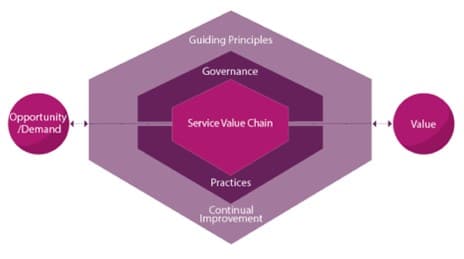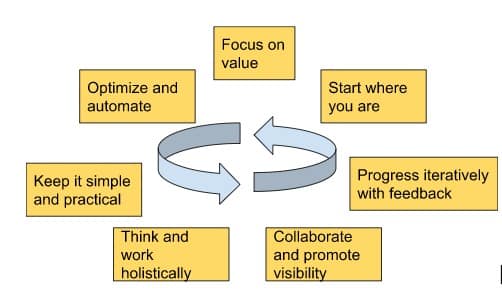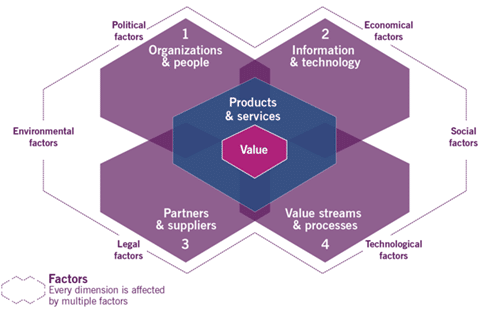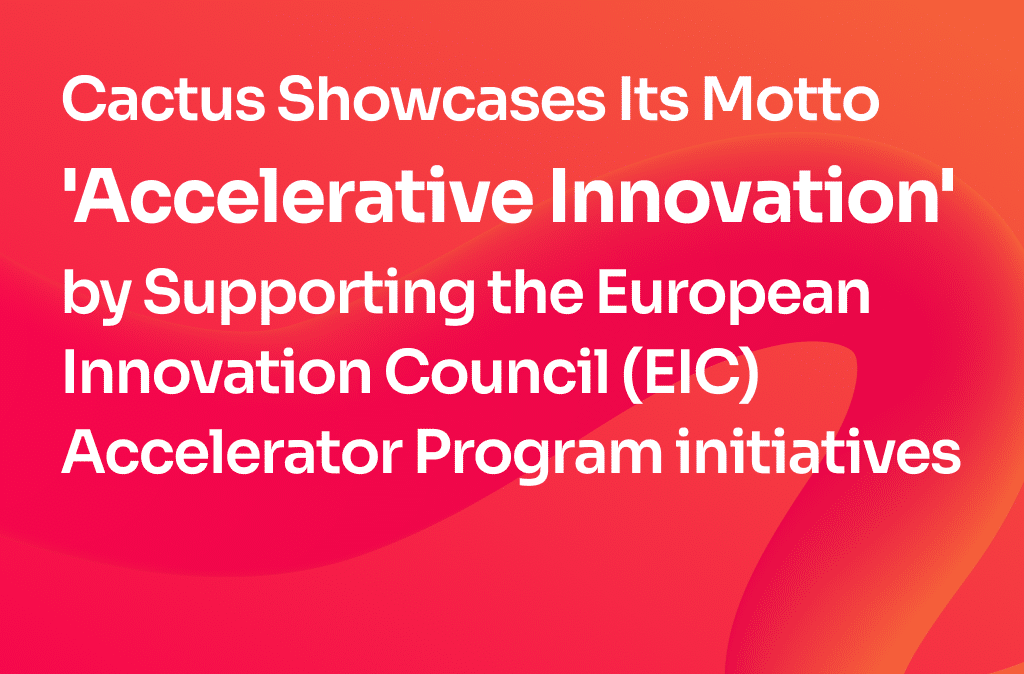What are ITIL’s best practices?
ITIL, or the Information Technology Infrastructure Library, provides a proven, standardized approach to IT service management that helps CactusSoft deliver high-quality IT services that meet or exceed customer expectations while improving efficiency, reducing risk, and fostering a culture of continuous improvement.
ITIL is a framework that provides a set of best practices for managing IT services. ITIL has gone through several versions since its inception in the 1980s, with the latest version being ITILv4. ITIL was developed originally in response to the British government’s frustration with the quality of IT services provided by its suppliers in the 1980s.
ITIL 4 provides guidance on how to deliver value to customers through IT services and introduces new concepts such as the Service Value System, the Service Value Chain and the four dimensions of service management.
Let’s dig a bit further into some of these concepts:
Service Value System:
It’s a map of the main elements/capabilities you need to have in place to run a highly efficient, effective, and agile service management organization. The components of the Service Value System are there to help you create value now and in the future: it sets out everything you need to turn opportunities into value: creating new services in the service portfolio or getting an IT service back online when there’s an issue. These components are represented in this figure:

- The Guiding Principles: the core messages of ITIL. Tried-and-tested ways of thinking and working; proven in the areas from which they originated (such as Lean Manufacturing)—and proven in their application to service management. When an organization absorbs and embodies these principles, it can avoid many of the pains and obstacles which commonly plague IT departments and service organizations today. These principles are represented in the figure below:

- Governance & Continuous Improvement
- Practices: these are the processes, the control structures—applying control to work and how it flows across the organization to create value. Without a process, work happens in a haphazard fashion and a positive outcome cannot be guaranteed on a consistent basis. To get things done quickly and properly, some structure is required: a queue of work and a way of describing how to do it. Processes help organizations get things done, be efficient, meet expectations, and be productive/profitable.
Service Value Chain:
It describes the activities that an organization performs in order to create value for its customers through the delivery of IT services. It is the model which shows how the components and activities work together to achieve the three main goals of service management:
- Run the business – Deliver value from services today (by operating the “Live” Service Portfolio).
- Grow the business – Improve services (incremental innovation) to deliver more value, make customers even happier, reduce costs, and eliminate risks to make services more resilient (high availability).
- Transform the business – Create new services (radical innovation) to satisfy new customer demands (new definitions of value) and bring them into production—redefining the way the organization operates, the products and services it offers to customers, and how it interacts with customers (transforming the customer experience).
The six core activities, or “value chain activities” are:
- Plan: This activity involves defining the organization’s objectives, determining its business opportunities and risks, and creating a plan to achieve its goals.
- Improve: This activity involves identifying areas for improvement within the organization’s existing IT services and processes, and then implementing improvements to increase efficiency, effectiveness, and customer satisfaction.
- Engage: This activity involves building and maintaining relationships with the organization’s customers and stakeholders, in order to understand their needs and expectations and deliver services that meet their requirements.
- Design and transition: This activity involves designing new or changed services, testing and validating them, and then transitioning them into live operation.
- Obtain/build: This activity involves obtaining and building the resources necessary to deliver IT services, including people, technology, and partnerships with external service providers.
- Deliver and support: This activity involves delivering and supporting the IT services, ensuring that they meet the agreed-upon service levels and that any issues or incidents are resolved quickly and effectively.
The 4 dimensions:
ITIL 4 recommends that organizations map the activity involved in delivering their products and services as service value streams—the paths of activity required to create value for the customer. Defining end-to-end value chains helps provide the holistic view that people who perform the activities need to see the bigger picture.
The four dimensions of ITIL prompt people to look beyond the traditional IT perspective of technology to consider the broader service ecosystem—all the moving parts which combine to create value for the customer. These 4 dimensions, represented in the figure below, are:
- Organizations and People
- Value streams and Processes
- Information and Technology
- Partner and Suppliers

ITIL where to start
ITIL certification is meant for individuals and not for companies. There are four levels of ITIL certification: Foundation, Practitioner, Intermediate, and Expert.
ITIL enables you to fully benefit from proven best practices in IT and is relevant to anyone involved in the delivery or support of IT services.
ITIL is aligned with various international quality standards including ISO/IEC 20000 (IT Service Management Code of Practice) and has been adopted by thousands of organizations worldwide.
The benefits of ITIL for both individuals and companies are numerous. ITIL certification provides individuals with a recognized qualification that demonstrates their knowledge of IT service management best practices. This can lead to improved job prospects, higher salaries, and increased credibility. For companies, ITIL provides a framework for managing IT services that can help improve efficiency, reduce costs, and increase customer satisfaction. Companies can also use ITIL as a reference to set up their processes, as ITIL provides guidance on best practices that can be tailored to meet specific business needs.
While ITIL is a widely-used and highly-regarded framework for ITSM, there are alternatives available. One such alternative is COBIT, which stands for Control Objectives for Information and Related Technology. COBIT is a framework developed by ISACA that focuses on the governance and management of IT services. Another alternative is Lean IT, which is based on Lean manufacturing principles and focuses on eliminating waste and improving efficiency in IT service delivery.
How CactusSoft delivers value to customers through ITIL best practices
In CactusSoft, we define our IT services and processes inspired by ITIL to align with customer needs and expectations and deliver high-quality reliable software solutions that meet or exceed customer requirements. By adopting a structured approach to risk management, Cactussoft identifies and mitigates potential risks before they become problems, reducing the impact of incidents and ensuring that its software solutions are delivered on time and within budget.
Promoting clear communication and collaboration, Cactussoft can ensure that its software development projects are delivered to the satisfaction of its customers.
By continuously reviewing and optimizing its software development processes, Cactussoft can stay ahead of changing customer needs and business requirements, delivering software solutions that provide maximum value to its customers.








